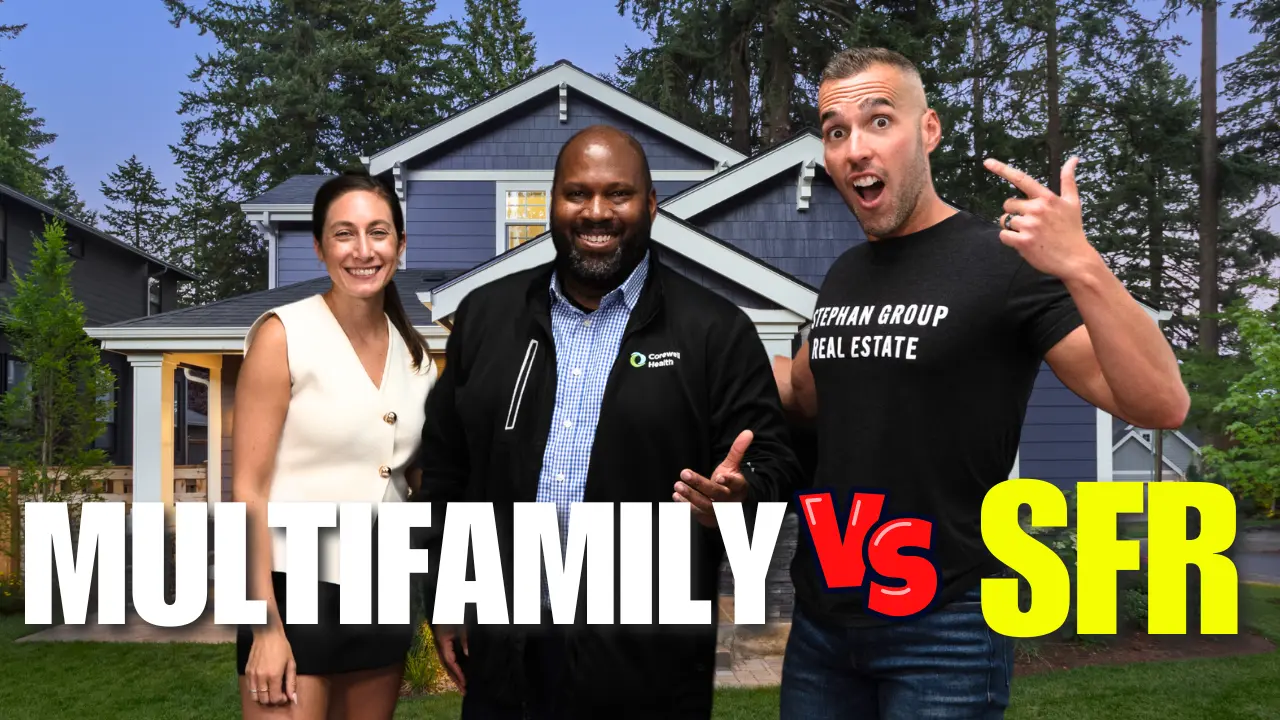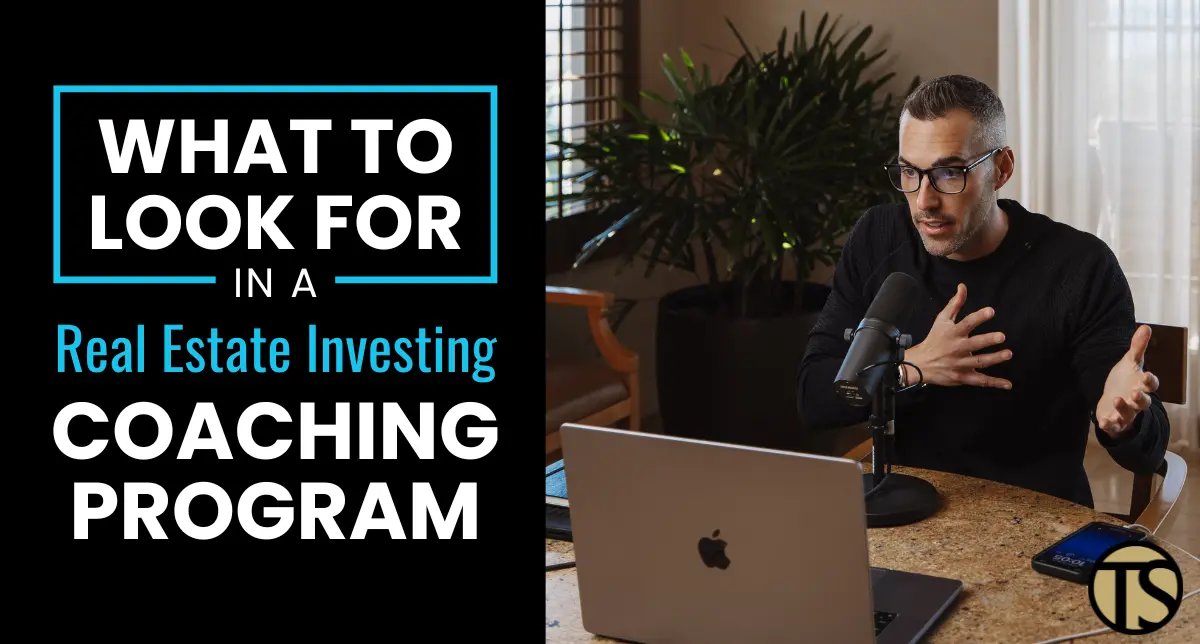Meet Dr. A, a busy physician and serial entrepreneur who made a significant pivot in his real estate investment strategy. He started out with eight scattered single-family rental properties but has since transitioned to owning a 14-unit multi-family portfolio, consisting of a 12-plex and a duplex. His story, shared with multi-family experts Tony and Andrea Stephan, highlights why many “smart investors” are making a similar shift.
Dr. A, a Michigan surgeon with a demanding career, wasn’t always confident about getting into real estate. Despite coming from an entrepreneurial background – his mother had a side hustle selling candy, and his father bought land, built homes, and rented them out – Dr. A initially felt scared and worried about having enough money to start investing. This feeling, he notes, is common even among high-income earners.
His first step into real estate was buying a small home in Taylor, Michigan, just before COVID-19 hit. This initial purchase gave him “the bug” to buy more properties. He acquired homes near the hospital where he worked and even tackled a fourplex in Ferndale that required significant rehabilitation on one unit.
However, Dr. A discovered that owning multiple scattered single-family rentals presented significant challenges compared to multi-family properties.
The Pitfalls of Single-Family Rentals (SFRs)
Based on Dr. A’s experience and the hosts’ insights, SFRs often fall short for serious investors for several key reasons:
- Lack of Cash Flow: Many SFRs purchased, especially at market peaks, don’t generate substantial cash flow from long-term rentals. This forced Dr. A into using short-term rentals for some properties, which felt more like a business requiring hired management.
- Vacancy Risk is High: In an SFR, if a tenant leaves and the property is vacant for even a couple of months while you prepare it and find a new tenant, all your potential cash flow for the year can be wiped out by mortgage payments, utilities, and repairs.
- Limited Valuation Growth: Single-family homes are primarily valued based on comparable sales in the market. This means you can’t significantly increase the property’s value by simply raising rents, unlike multi-family properties.
The Advantages of Multi-Family Properties
Dr. A’s move to multi-family was driven by the clear benefits. Multi-family is viewed much more as a business.
- Superior Cash Flow & Scalability: Multi-unit properties offer much better cash flow potential. Even if one unit is vacant in a 12-plex, the property can still cash flow, covering the mortgage, utilities, and maintenance. This allows for greater financial stability.
- Ability to Force Appreciation: A significant advantage is the ability to substantially increase the property’s value by increasing its Net Operating Income (NOI), for example, by increasing rents. This increased valuation can then be leveraged for cash-out refinancing, allowing investors to pull out tax-free money (since it’s debt) to reinvest, a strategy difficult or impossible with SFRs. Increasing rent by $200 across 12 units in a 6.5% cap market could add over $440,000 in valuation.
- Less Stress (Surprisingly): Counterintuitively, Dr. A finds the stress of managing his multi-unit property to be less than managing eight scattered single-family residences (SFRs). He gets fewer direct calls from tenants in his 12-unit building compared to his duplex. Tenants in larger buildings often perceive the owner as a business or group, rather than an individual with whom they can text at any hour.
Making the Shift: The 1031 Exchange
Dr. A facilitated his transition by executing a 1031 exchange. This allows investors to sell an investment property and reinvest the proceeds in a “like-kind” property, thereby deferring capital gains taxes. This process requires strict timelines: 45 days to identify replacement properties after selling and 6 months to close on them.
Selling the scattered SFRs required careful timing, considering factors like how long properties might take to sell and existing tenant leases. Strong relationships with experienced brokers, including those from whom he had previously bought properties, and leveraging his wife Andrea’s network were crucial during this process.
Now that he has stabilized his 12-plex, Dr. A plans to either refinance it to pull money out for another purchase or perform another 1031 exchange into an even larger property.
Beyond Real Estate: Continuous Ambition
Dr. A’s entrepreneurial spirit extends beyond real estate. During the COVID-19 pandemic, recognizing the vulnerability of relying solely on income from his medical practice, he sought additional income streams. He invested in a paint franchise, “That One Painter,” and now owns five territories in Southeast Michigan. He specifically sought a service-based business, believing they are less likely to be impacted by Artificial Intelligence in the future.
Overcoming Fear and Never Settling
A key message from Dr. A’s story and the discussion is the importance of overcoming the fear associated with real estate investment, especially when making the jump to multi-family. He was more afraid of buying his first single-family home than he was of buying his first multi-unit property.
Dr. A emphasizes the importance of maintaining continuous ambition and never settling, continually seeking ways to create multiple streams of income. He encourages others to see that starting with multi-unit properties is arguably the best way to grow a real estate portfolio.
Tony and Andrea Stephan, who own a substantial multi-family portfolio themselves (258 units), believe that owning even one small multi-family deal can be life-changing. They offer resources, mentorship, and brokerage services to help others get started in small multi-family real estate, whether trading up from SFRs or buying their first deal.
Dr. A’s journey from a scattered portfolio of eight SFRs to a concentrated 14-unit multi-family portfolio demonstrates a powerful shift driven by the desire for better cash flow, scalability, and the ability to significantly increase property value. It’s a compelling case for why multi-family is often the preferred path for investors looking to truly grow their wealth.






